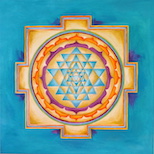MEDITATION TECHNIQUES
Meditation techniques are numerous as well as offerings. But we should not forget that we have not personally invented meditation but that meditation is an Eastern technique thousands of years old. And also that the Western world has a completely different approach and attitude to spirituality and life in general than Eastern nations.
A Westerner will more talk about meditation than practice and will generally use meditation techniques to reduce stress or to solve other problems in life.
Meditation in Western society is more understood and practiced as a concentration.
Meditation (or concentration) techniques span a wide range, from contemplation which means deeply reflected thinking about something, to the highest states of yogic, Buddhist or Tantric thought.
The mind always wants to be somewhere. There is an unlimited choice of subjects to focus the mind on.
Depending on personal nature the subject of meditation in Yoga (which is dualistic) and in Vedanta (which is non-dualistic) can be internal or external, abstract or concrete.
For very restless heads the object of focus of the mind will be an object with form and for those more stable the formless object.




